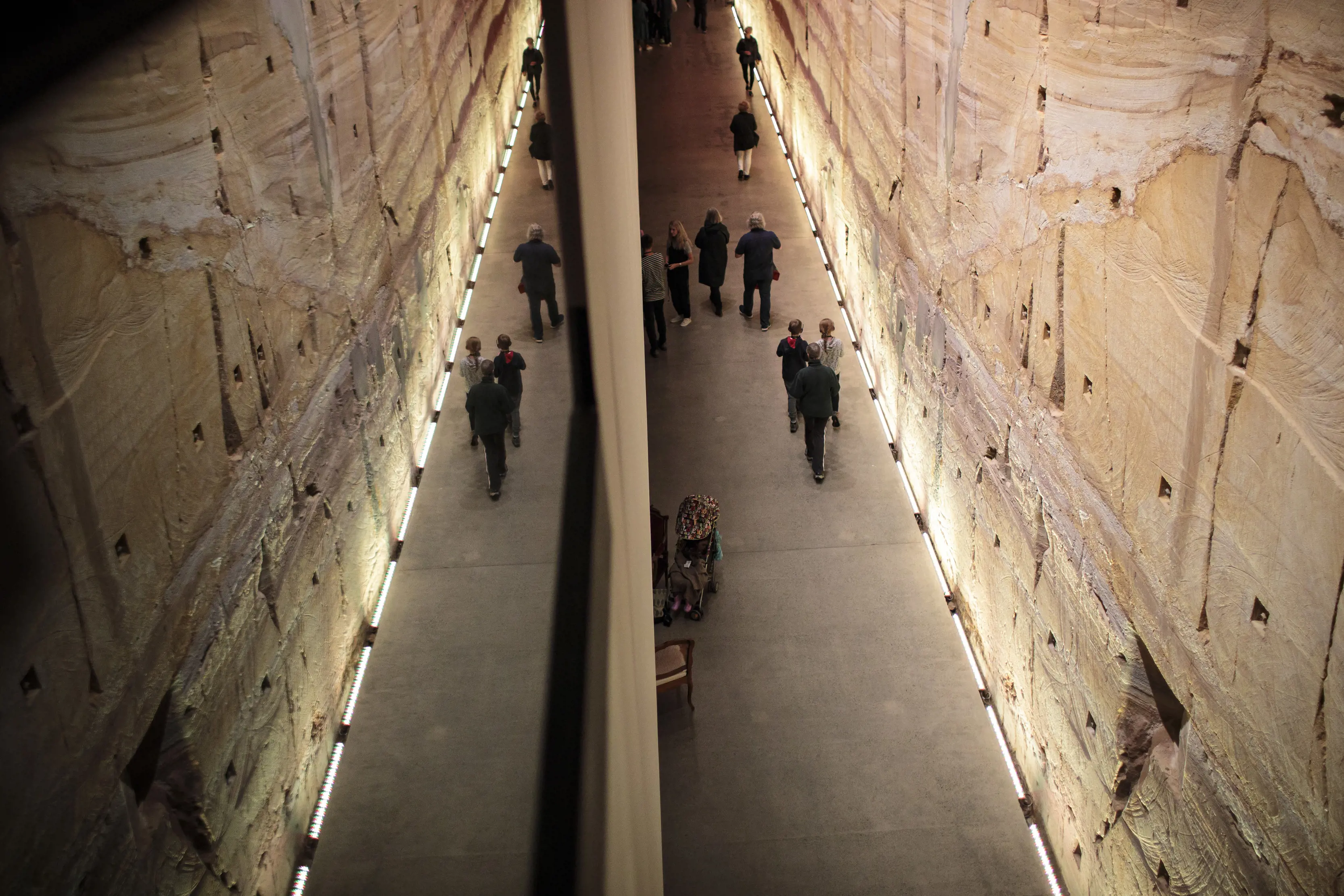
It’s best to bring a sense of humour to Mona. Curiosity is useful, too. And a sense of wonder.
The remarkable Museum of Old and New Art, carved into a headland at Berriedale, 13km north of Hobart’s CBD, has been called many things since its shock-and-awe opening in 2011. Quixotic. “A subversive adult Disneyland” (owner David Walsh’s description). Iconoclastic. Shocking.
At heart, Mona is a world-renowned art collection that doesn’t take itself too seriously. It’s a place to appreciate art, without the pretension. Come here to have fun, get tipsy, be shocked, be delighted, laugh, catch a gig, eat hot chippies, dine in style, hallucinate in bright lights.
The experience
Mona’s mirrored entry is the first clue your senses are in for a wild ride inside. There’s no signage and no natural light in this underground labyrinth. Visitors download the O app that geo-locates them in the darkness and suggests nearby artworks to explore. But there’s never any indication what you’re looking at is particularly significant, despite this being one of the world’s largest private museums with a noted collection of installations by American light artist James Turrell plus works by the likes of Hirst, Picasso, Piccinini and Ai Weiwei. Not to forget the phenomenal collection of pre-Colombian art that Walsh began collecting years ago, and the Egyptian mummies, and the colourful pop art.
Art is not an elite pursuit here on the Berriedale waterfront. It’s what you make of it. Choose your own adventure.
What's that smell
Is this Mona’s most famous piece? The Belgian artist Wim Delvoye’s Cloaca Professional (aka "the poo machine") is a grotesque chemistry-set that replicates the human digestive system, complete with daily output of faeces. Love it or hate it (audiences are equally divided on the matter), it’s become synonymous with Mona’s devil-may-care attitude.
Extra special
Some artworks are deemed to be so significant they require an additional entry fee. These include Chilean-American artist Alfredo Jaar’s The Divine Comedy, an immersive journey through hell, purgatory and heaven. Tickets cost $20 and numbers are capped to 10 people at a time. James Turrell’s mind-altering Unseen Seen is $25 a ticket (two people at a time) and his Event Horizon costs $10. In the Mona grounds, entry to the kaleidoscopic maze of the House of Mirrors is $10.
Light fantastic
The American artist James Turrell seems a natural fit for Mona with his focus on the way space and light can alter human emotion and perception. His most accessible piece is Amarna, a raised gazebo with cut-out roof through which guests admire the changing light and moods of sunrise and sunset. There are also four, more confronting works in the Pharos wing. Visitors enter via a corridor of light, Beside Myself, that leads to Faro restaurant (see below). The dining space is dominated by a huge sphere called Unseen Seen, inside which participants experience trippy light displays before decompressing in Weight of Darkness, a pitch-black space that drains the senses. Finally, Event Horizon is another mind-bending journey through colour and space.

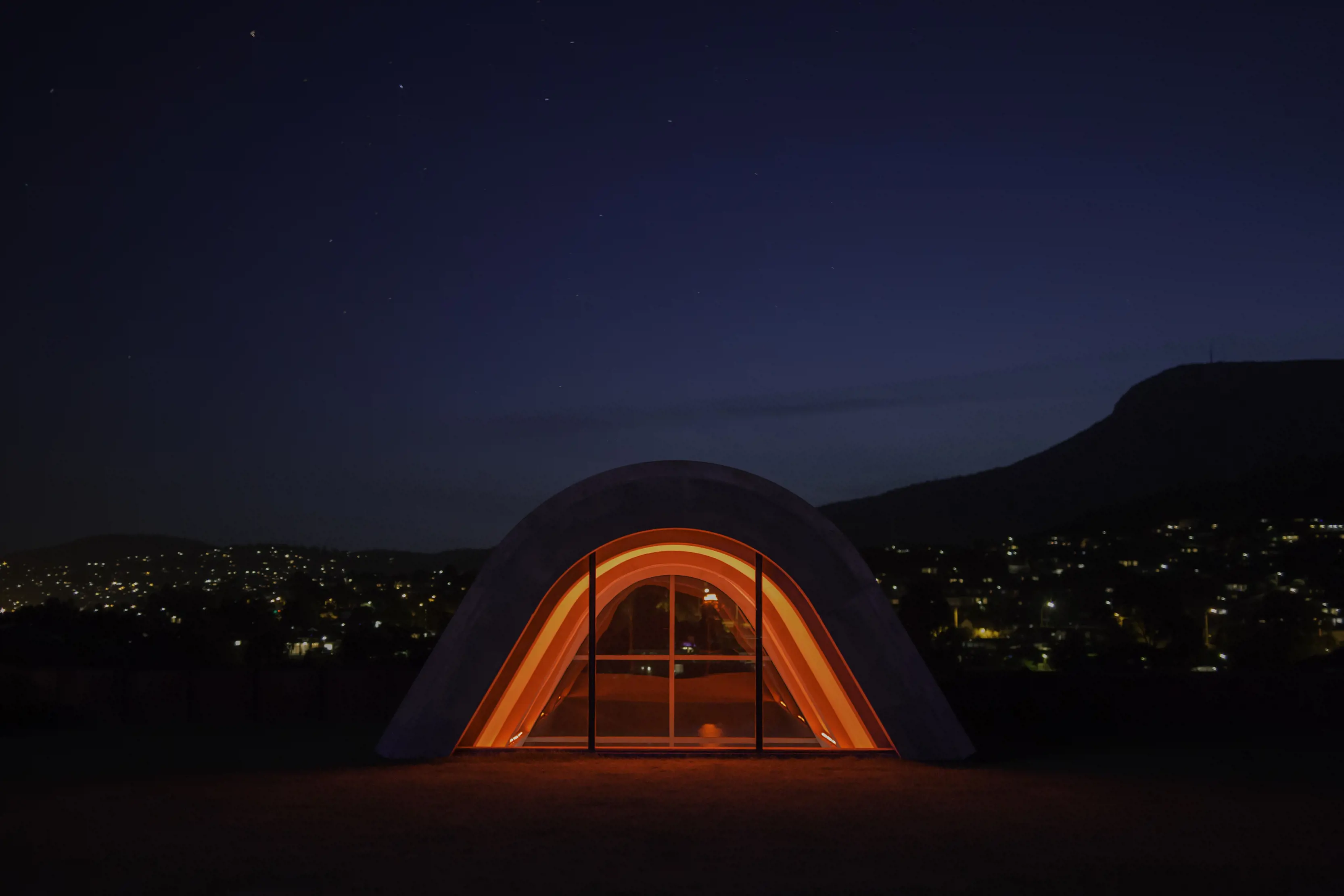
Hunger games
In food, as in art, Mona caters to all appetites. Buried 17m underground, the Void Bar serves stiff drinks (you’ll likely need one), pizza and sweets to fuel cultural awakenings.
The on-site Moorilla Winery, a pioneering Tasmanian vineyard, is available for wine tastings ($15 a head, book ahead) or pop into its wine bar to linger over a glass (or a bottle) and snacks.
Drinks-wise you can taste any wine or beer as long as it’s made on site or at Mona’s Domaine A vineyard in the Coal River Valley or at Moo Brew in Bridgewater, Tasmania’s largest craft brewery.
You’ll also find ciders, spirits and other tipples sourced from around the state.
Dubsy’s dishes up fire-cooked and flame-grilled fare (and hot chips) beside the sprawling hilltop lawns.
Extreme dining
Food, but make it fancy. The Source restaurant serves seasonal Tasmanian produce for lunch on “living tables” of greenery. The food is refined, the wine list and views impressive. Art abounds, naturally.
Relative newcomer Faro is an evolving food experience featuring frequent experimentation, plus occasional music, dance and absurdist performance. Whatever happens, you can count on a memorable meal in this luminous space suspended above the water.
Reservations are essential at both venues.
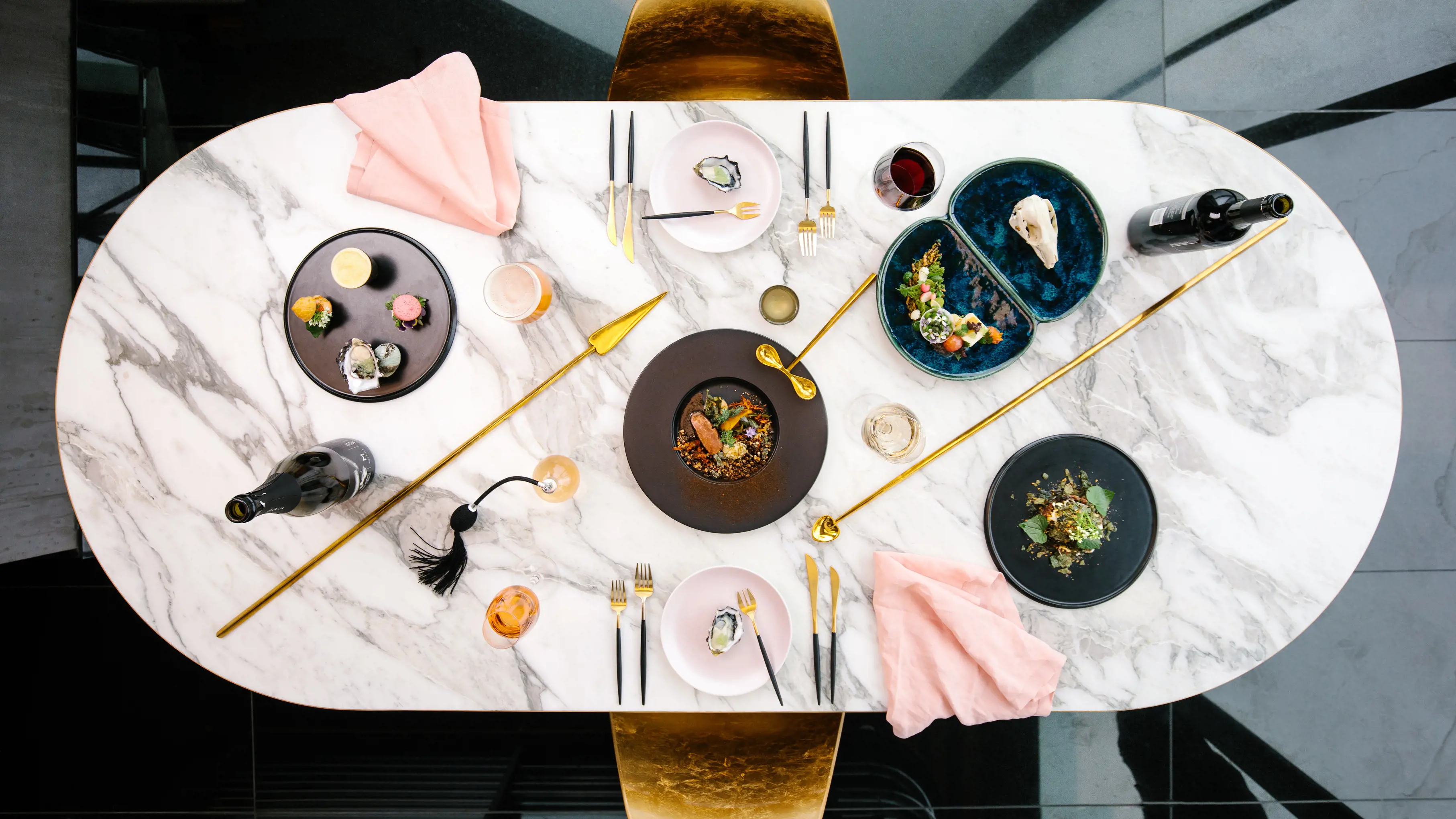
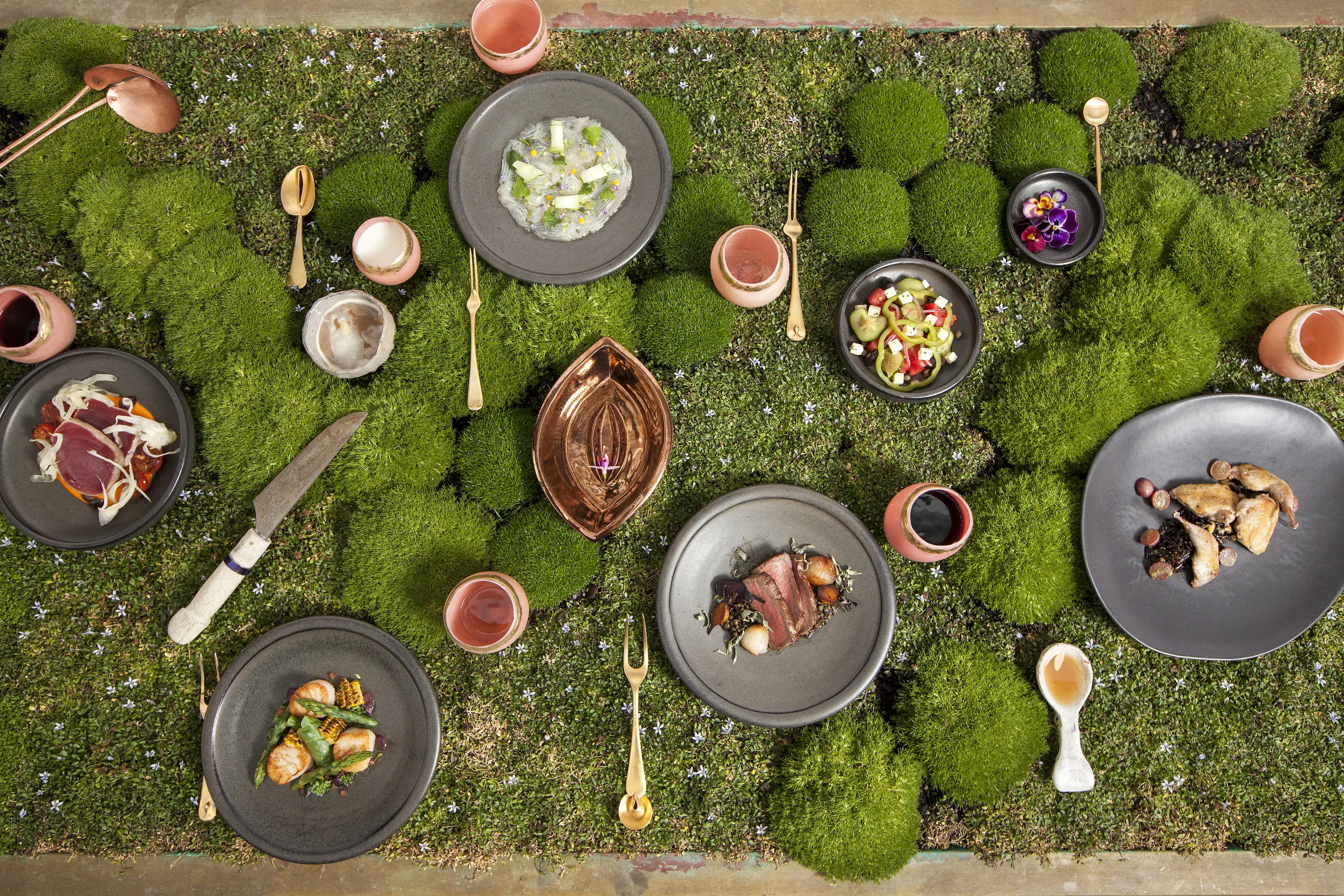
Song and dance
There’s live local music in the Mona grounds during opening hours. Concerts are held on the lawn (free) if the weather allows, and inside the museum (ticketed) if it’s not. Bring the kids. Even if they don’t like the music they’ll love the beanbags and the awesome children’s playground-artwork called Girls Rule, with its stairs and slides cast in bronze.
Arrive in style
Approaching Mona from the River Derwent captures the full impact of this soaring monument anchored to the hillside. Two camouflage-painted fast catamarans depart from central Brooke Street Pier from 9.15am until late afternoon for the 25min cruise to Berriedale, arriving at the base of a 99-step staircase inspired by Greek temple entrances, with an accessible entrance via a tunnel for those in need. The Posh Pit, a private lounge at the bow of the ferry, serves free-flowing drinks and “tiny food” to commuters for a premium ticket price.
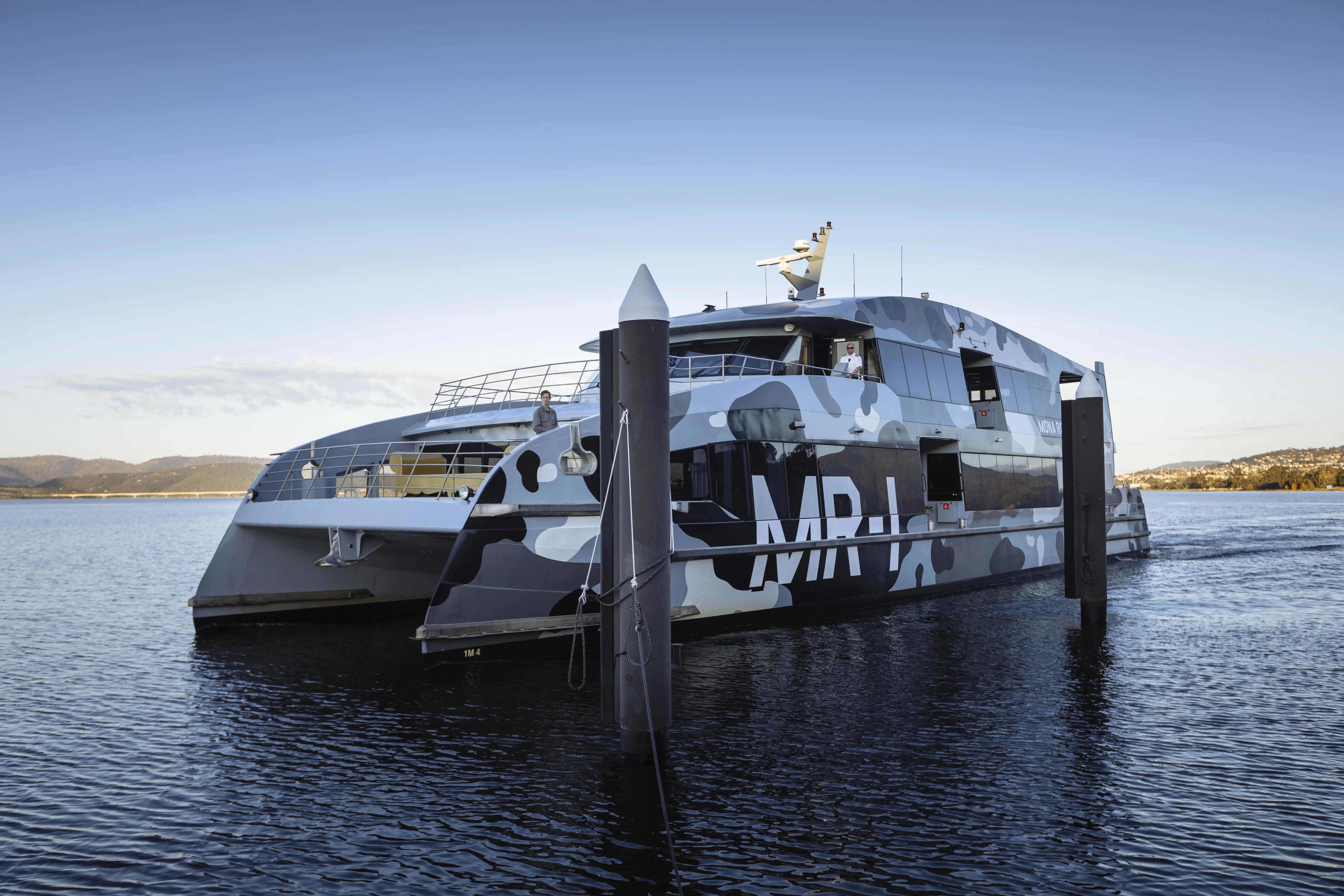
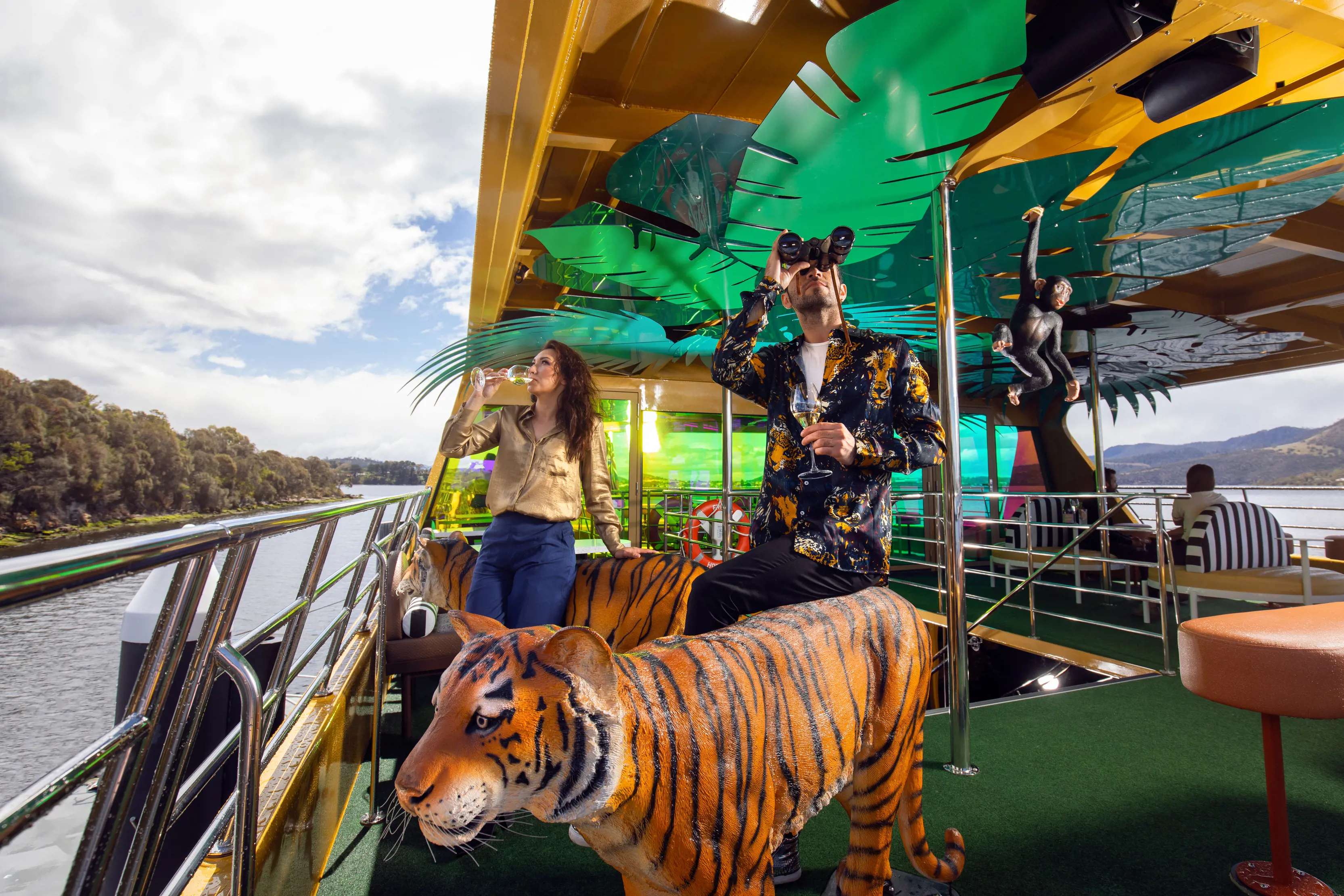
Sleep over
Mona has eight spectacular guest pavilions facing east across the Derwent. They come in one- or two-bedroom models with ancient art (Roman coins and mosaics, central American treasures) and modern canvases by Whiteley and Nolan. Each has a unique character, but wine fridges and water views come as standard.

Accessibility
Most of the museum is accessible. Some artworks and installations cannot be reached by wheelchair users. The ferry jetty - at the bottom of 99 stairs - has an accessible entrance via a tunnel for those in need. The O app supports VoiceOver and screen-readers for people with low vision or dyslexia.
Admission
Entry costs $39 for adults, $33 concession, $17 for under 18s, and free for under 12s. Entry times are assigned and must be pre-booked, though the impulsive can opt for a wildcard entry where you show up and staff usher you in when space allows.
Entry is free to Tasmanians but they must pre-book and pay a deposit of $5, refundable after their visit. They’ll also have to show ID on arrival. Tasmanians under 18 enter for free.
The entire Mona complex is cashless. You’ll need plastic or phone-linked card to pay for everything.
Hours
Thu-Mon, 10am-5pm.
Where
Museum of Old and New Art, 655 Main Rd, Berriedale.
